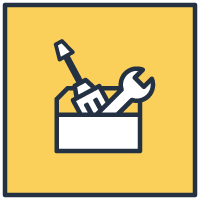Team Collaboration/Team Adjustments
3.1 Organize the transition team
Include team members who representing all knowledge and skill domains essential to promote full inclusion in the high school environment and build the foundation for a successful transition to adult life. Include members with a strong understanding of deaf-blindness. Recognize that student and family members are equal partners on the transition team.
3.2 Identify team goals
Facilitate the student’s transition from school to post-school activities. Together, the team shares responsibility to shape the student’s path toward post-secondary education, continuing and adult education, vocational education, integrated employment, supported employment, adult services, independent living, and community participation.
3.3 Develop the team process
Establish guidelines for shared leadership, meeting protocols, communication, problem-solving, establishing shared goals, and ensuring the participation of all team members.
3.4 Involve peers
When appropriate, include the student’s peers on the transition team. These may be classmates or friends from the community.
3.5 Strengthen peer mentor and tutor relationships
Provide the student with ongoing opportunities with peer mentors and tutors (with and without disabilities) across all applicable settings (e.g., home, school, community).
3.6 Address legal issues
As part of educational and transition planning, address legal issues, including:
- Guardianship
- Voting
- Supplemental Security Income (SSI)
- Trust funds/estate planning
- State laws governing when a child becomes a legal adult
- Access to health services and records.
The family should understand the difference between guardianship and conservatorship and the implications of both.
3.7 Explore opportunities beyond the school setting
Fosters participation in an array of non-school activities and opportunities (e.g., work, recreation, and independent-living activities within the community). As appropriate, invite community representatives associated with these activities to participate in transition planning.
3.8 Archive information
Over time, as information is collected about the student (e.g., strengths, interests, accomplishments, communication methods, preferences), save and organize it for future use (e.g., to orient new team members or create documents that the student can share with others).
